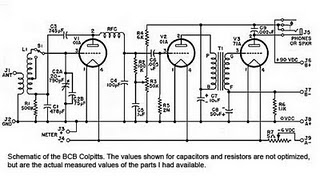
poetic electricity
Writing in response to PoemTalk #22 on Zukofsky,the Cincinnati-based engineer Aryanil Mukherjee, whose site featuring translations of Bengali poetry we admire, sent us some helpful observations:
I thought I would share this with you if it makes any sense or sheds any new light with which certain aspects of the poem might be reviewed. The opening line [Its hard to see but think of a sea condensed..] made me think of exactly how an electrical condenser [ also known as a capacitor] works. Although, in the next line Zukofsky moves on to the transmission of light and waves, refers to electric stress, finally conditioning it with "unless the space the stresses cross is air". I thought that the construction and functioning of an electric condenser remains central to these lines.
 Condensers build voltage and store energy [electric stress] with no real "material" actually conducting electricity. Their construction shows an air gap between the two walls across which the voltage or voltaic stress is preserved. In physics, when we compare electric circuits to elastodynamic spring-mass systems the condenser is equal to a damper which plays a similar role of dampening/amplifying a force [by reducing acceleration].
Condensers build voltage and store energy [electric stress] with no real "material" actually conducting electricity. Their construction shows an air gap between the two walls across which the voltage or voltaic stress is preserved. In physics, when we compare electric circuits to elastodynamic spring-mass systems the condenser is equal to a damper which plays a similar role of dampening/amplifying a force [by reducing acceleration].
George Gamow, the Russian born American nuclear physicist, wrote a great deal of popular science. In one of these books [can't remember the title] he describes wave propagation comparing the sea to an electric circuit [and a mechanical spring-mass system] with several layers of capacitors or condencers in parallel. I thought Zukofsky's description of the sea came very close to Gamow's model especially where he talks about "many condensers large and small"...etc.
That a great deal of electric stress [and light] can be stored in between the surface waves and the seabed in layers and all of that can be actually "transmitted" without a real "felt" medium in between is perhaps not just scientific truth but also poetic electricity.